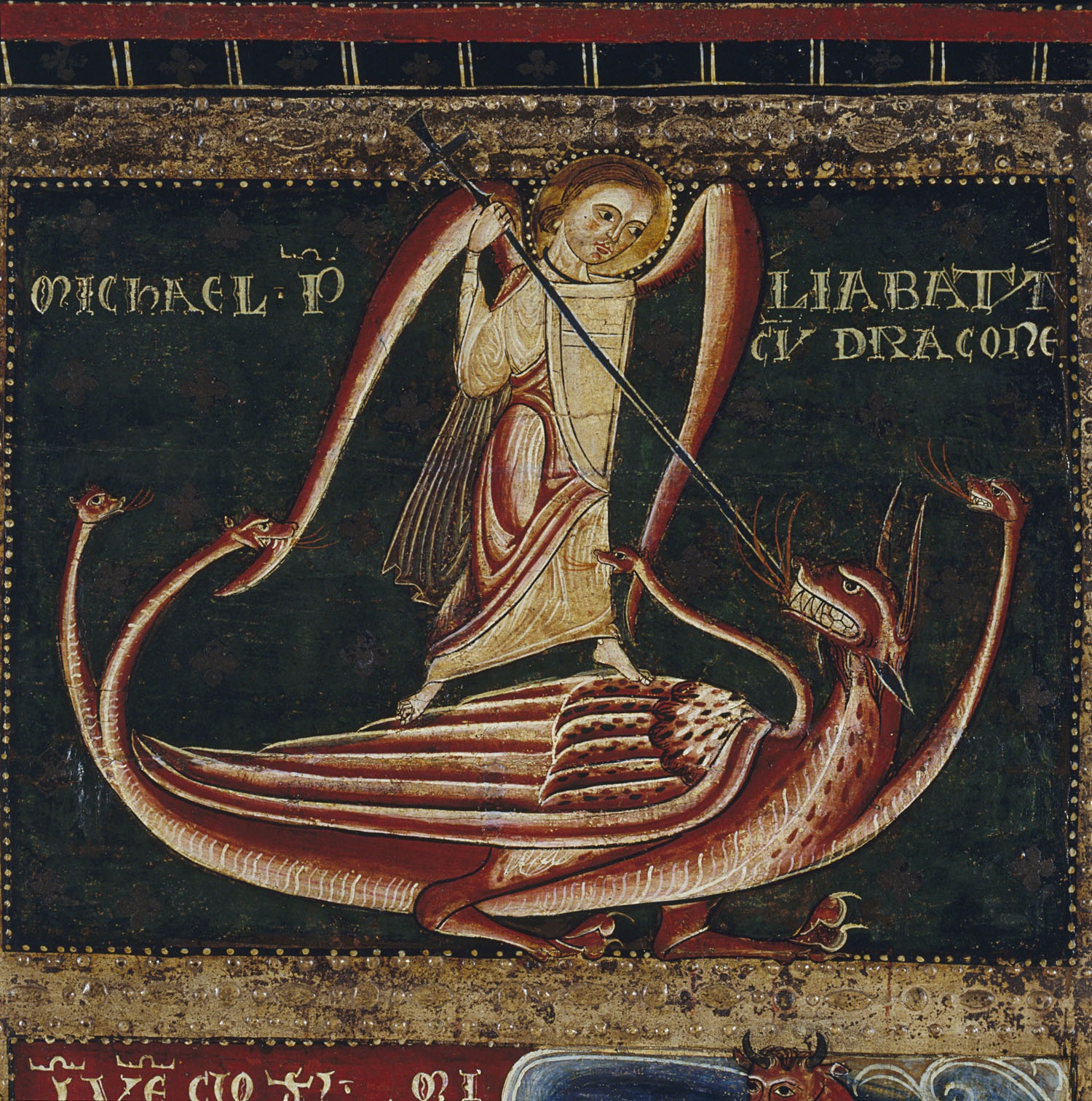The dragon

The dragon
The bestiaries define the dragon as the biggest snake and of all the living beings. In Romanesque times it is represented as an enormous and terrible snake: with an open mouth and prominent teeth, breathing fire, flaming eyes, horns, the clawed paws of a lion, wings, and a body closer to a bird than a reptile, covered in scales to protect it, and a long tail, where it had its strength.
This fantastic animal contains the four elements of nature: fire for the breath, air for the wings, water for the scales of the body and the earth for the shape of the snake.
The dragon watches over the treasures, over the passes and the sacred places, it sweeps the ground and is a rival of the hero, knight or saint. It is the chaos from which life is born and it must be killed for life to flow freely. There are two characters who have fought against the dragon. Saint Michael, who faced the demon, habitually represented as a dragon with many heads, as in Sant Joan de Boí, or only with one as in the paintings of Sant Miquel d’Engolasters. On the altar frontal of the Archangels, Saint Michael, with a shield and a spear, fights against one of five heads. The same scene can be seen on the staff of Mondoñedo. The second is Saint George, of whom there are no representations in the Romanesque art of the museum, but there are in the works of other periods.
On other occasions, the dragon bears a star inlaid in its tail, and attacks a sagittararius or centaur, which defends itself by throwing arrows, as can be seen in the paintings of Sixena.







